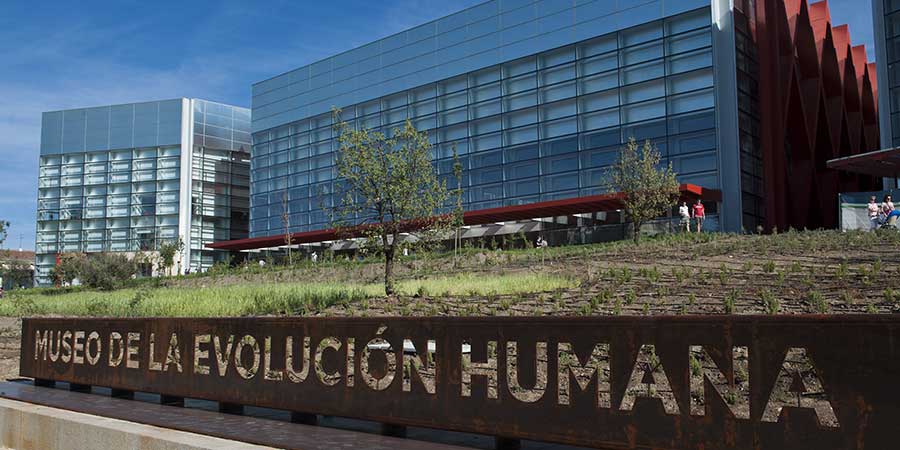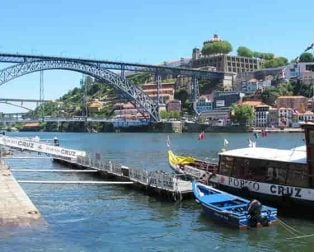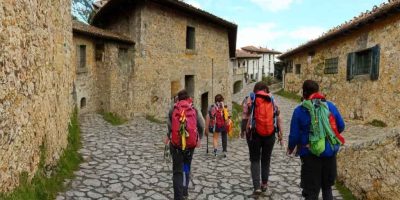Insiders Guide to Burgos
This summer we caught up with Burgos local Gonzalo Santiago, from the Museum of Human Evolution, to learn a little bit more about his home town and everything it has to offer. Enjoy this short Insiders Guide to Burgos which is one of the charming historic cities you will pass through as you walk the Camino Frances.
If you have limited time to complete your Camino journey then starting your Camino from Burgos might be a nice option, taking 10 nights to walk from Burgos to Leon or you could opt to walk from Burgos to Santiago de Compostela which would take you just over three weeks to finish.
An Insiders Guide to Burgos by Gonzalo Santiago
Burgos has enough things to see and do for you to spend several days discovering its treasures. This historic medieval town, in the province of Castilla y León, is about two hours north of Madrid and is really well serviced due to its central location in northern Spain. It is the perfect spot for tourists to immerse themselves in the Castilian and Spanish culture.
WHAT TO VISIT
I would first recommend a visit to the Museum of Human Evolution, which was built to become a national and international reference on human evolution and to explain the important issues about our past, present and future as species. The architecture of the building is the result of a determined work of the people of the city to create a modern Burgos.
It holds not only the findings at the Atapuerca Sites, but also offers a holistic vision of human presence on the earth and provides new theories about human evolution. If you have time enough it is also worth to visit the Atapuerca sites, located 15 kilometres from the city. They are the most important archaeological sites in Western Europe. The fossils found there have permitted us to rewrite the history of Europe and to know how we have evolved for millions of years.
Another must-see is the Burgos Cathedral, which was declared a UNESCO World Heritage Site in 1984. It is the only Spanish cathedral that has this distinction independently and is one of the best examples of Gothic Architecture in Europe. Its construction began in 1221 (it was the first gothic cathedral to be built in Spain) under the orders of King 
The entire history of gothic art, for the purpose of this Insiders Guide to Burgos, is summed up in the gorgeous architecture and its unique collection of artworks, including paintings, tombs and stained glass. Works of extraordinary artists are preserved here. The interior is stunning: many elements were built during the Renaissance and Baroque period.
For this reason, there are a lot of magnificent stone carvings, altars, sculptures and other treasures. In front of the chorus there are buried the great knight “El Cid” and his wife, Jimena (the epic legend of El Cid is an important part of the rich historical heritage of Burgos and is ingrained in the city itself).
Very close to the cathedral lies Saint Mary’s Arch, whose facade contains sculptures of the most important players in the city’s history, and the churches of Saint Nicolas of Bari, Saint Gil, and Saint Stephen. You can finish this central tour walking along the emblematic ‘Paseo del Espolón’, home of the elegantly-designed Burgos playhouse and if you want to get a full view of the city, you can go up to the Castle Lookout Point.
Burgos Castle is where the city’s earliest origins first took hold. From this lookout point, you’re able to enjoy the views while contemplating Burgos’ historic, artistic, and natural heritages.
Another important spot when visiting Burgos is the ‘Casa del Cordón’, located in the city center and built at the end of the fifteenth century. This house was where one of the first human rights declarations was conceived and where the Catholic Kings met Christopher Colombus when he went back from his second trip to America.
In the southern part of the city, you will find the majestic Monastery of ‘Santa María la Real de las Huelgas’, founded in 1187 by King Alfonso VIII of Castille. It holds one of the most interesting collections of medieval cloth-work in all of Europe. Its architecture mixes christian and muslim styles. You can’ t miss the royal palace at the entrance, dating
Another breathtaking monastery and church is the ‘Cartuja de Miraflores’, a peaceful fifteenth-century monastery with beautiful interiors that is set deep inside a tuft of forest located just three kilometres from Burgos. Although there are monks that reside and study here in a life of silence, you will probably never see them. This abbey shines like a true gem as an exemplary piece of late Gothic Architecture in Burgos. Also, a bit further down the road (10 km), you can find the ‘San Pedro de Cardeña’ Monastery, a building of great beauty.
EAT – Insiders Guide to Burgos
Burgos is also a great place to discover Castilian gastronomy. You can’t leave the city without having some tapas in the city centre. Burgos was named the Gastronomic Capital of Spain many times and its cuisine is renowned across Europe. The most famous of this dish is ‘Morcilla de Burgos’, a rich pig blood sausage that is rather like a black pudding filled with onions, herbs and rice. You should also try roasted lamb, chopped pork, red beans (called Ibeas) and hotpot. There is a range of tapas bars and restaurants in the city offering a wide selection of memorable dishes.
Thank you very much to Gonzalo Santiago for giving us this insiders guide to burgos. We look forward to visiting again soon. For anyone who would like to learn more about the Camino de Santiago route from Burgos please contact one of our Travel Specialists.





